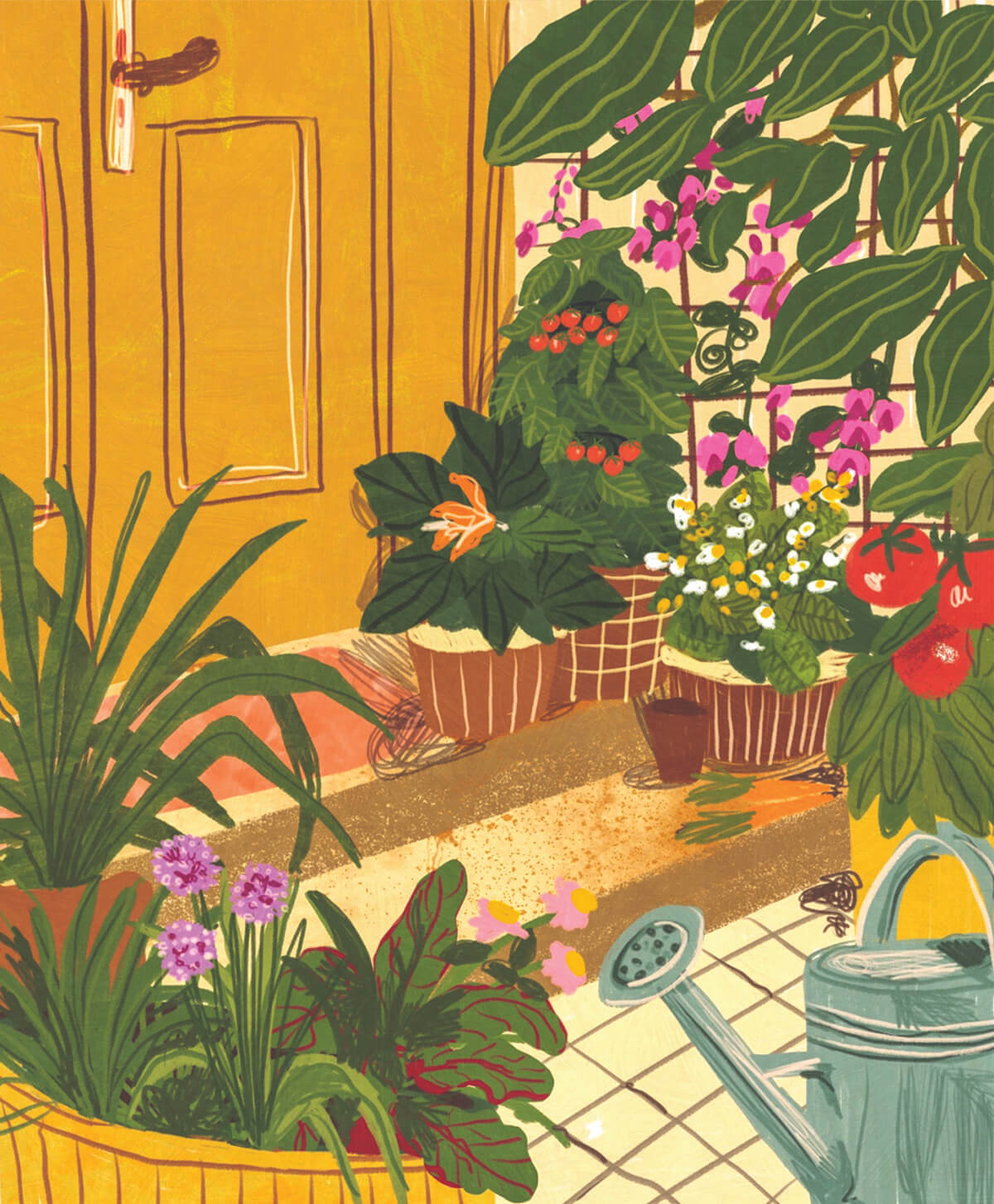Home & Living
Container Gardening Offers Big Impacts for Small Spaces
For many who want the benefit of plants without the hours of work, it can be the next best thing to more traditional dirt digging.

In 2011, when a pregnant Molly Burger moved into her current home in Canton, she was thrilled to have a rooftop deck. But fearing that it posed a safety hazard for her little ones (her older son Henry was almost two at the time), she had wooden crates installed along its edges as a buffer. After she filled them with soil, they became container gardens—and have served her family well since.
“Part of the reason my husband and I moved here is that we didn’t want to spend our time on weekends doing lawn care,” explains Burger, who has always lived in cities, and thinks potted plants are “just enough.”
She fills her rooftop beds with plants like aster, which blooms purple in the fall. Beneath her kitchen window, planters add some privacy from neighbors. And outside of Burger’s office window, potted black-eyed Susan on the sidewalk provides a pick-me-up.
“They brighten up my street,” she says, noting that her son, Calvin, 11, helps with harvesting and watering. “For me, with younger kids, container gardening is perfect.”
And for many others living in small spaces, or who want the benefit of plants without the hours of work, it can be the next best thing to more traditional dirt digging, says Elizabeth Heubeck, a certified master gardener through the University of Maryland Extension.
Her first piece of advice is to make sure you know the needs of each plant before combining them within one pot.
“Two plants might look great together, but if one is going to require watering every day and the other one is prone to mold and mildew if it gets too much water, you want to rethink that,” says Heubeck, who’s known as the Gaywood Gardener.
Next, when looking at aesthetics, Heubeck likes to use the “thriller, filler, spiller” method. “The thriller offers height, the filler [occupies] the space in between, and the spiller might drape over the container in a trail or cascade,” she says.
And often the most important part of container gardening is, well, the container. “You don’t want to get a heavy container that you won’t be able to move or that is prone tocracking,” says Heubeck. That includes clay pots, which can be delicate. Alternatives like resin are both durable and lightweight.
One rule all gardeners should follow is waiting to start planting until after Mother’s Day, usually the last frost date. After that, the only other steadfast guideline is using potting soil, says Heubeck. “You want your soil to be porous, since the water won’t have anywhere to go except the drainage hole on the bottom [of the pot].”
Much like Burger, Heubeck loves the tranquility and calm that comes from building a container. “You’re sweaty and covered in dirt,” she laughs, “but it’s so peaceful, patting down the soil and putting plants together.”